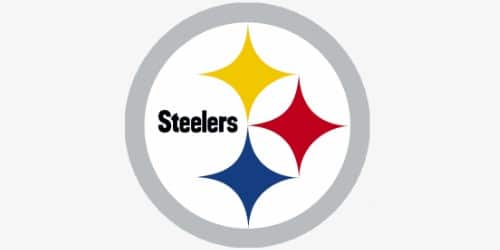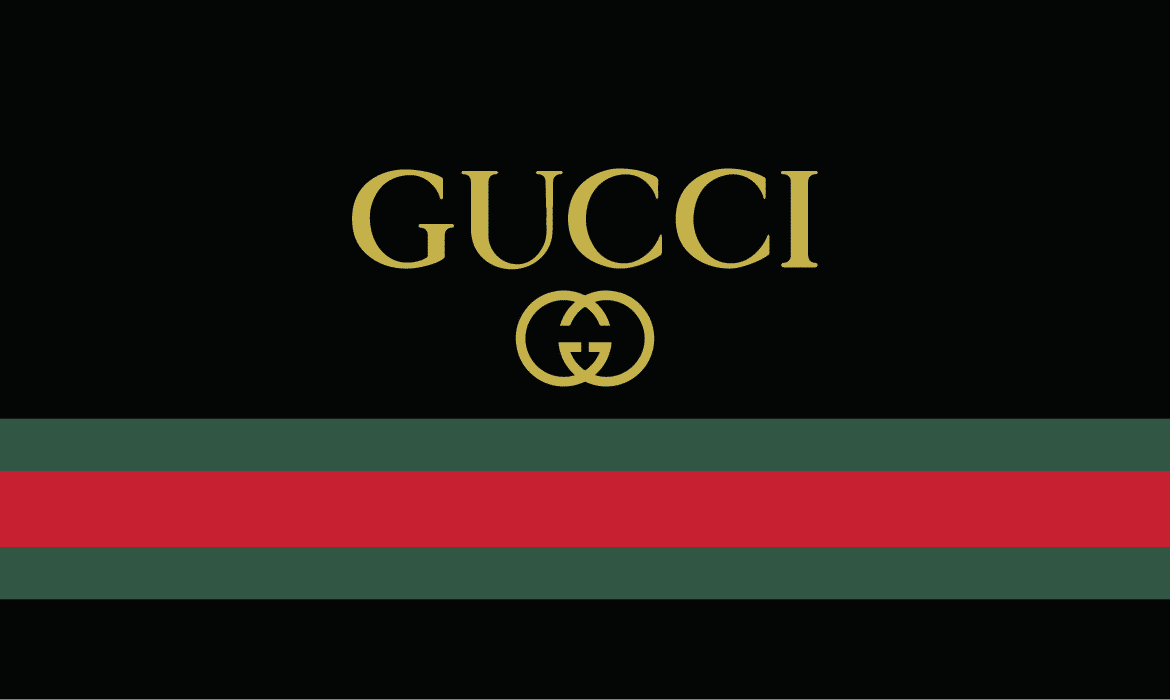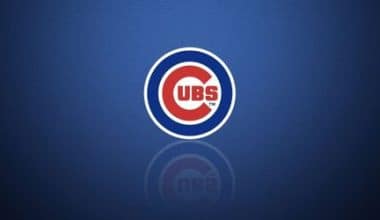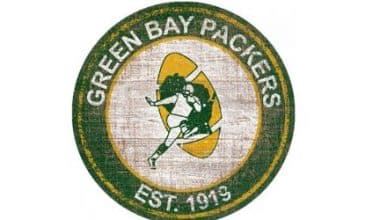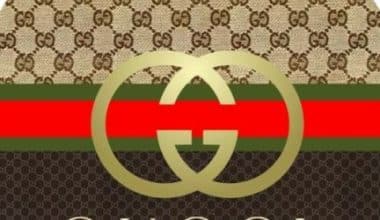Ever heard of any team that’s often called names like the Pirates, the Card-Phil, and the Phil-Pitt? Well, if you follow the NFL, these names won’t be strange to you. During their transition, the Pittsburgh Steelers went by these names. They have won the most awards and won the most games in the league. It was started by Art Rooney in 1933, making it the seventh-oldest team in the National Football League.
The Steelers play in the North Division and are based in Pittsburgh. From the start, it was hard for them to be contenders for the title. But when Chuck Noll was hired, everything changed. With his skills as a manager, he made the Steelers an elite winning team.
Steel’s natural strength and toughness make it a great match for the Steelers’ highly praised, bone-crushing defense. This is why the three-star logo of the Pittsburgh Steelers is one of the most well-known in sports. Only the Steelers’ helmet with the trademarked logo brings worldwide recognition and appreciation for these strengths.
It has come to symbolize the strength of the team and the Steel City; it represents seven decades after Art Rooney purchased the NFL franchise and five Super Bowl victories later. But how many fans are aware of the significance of the star-like figures and the origins of the logo? Let’s find out…
What Exactly Are the Pittsburgh Steelers?
The Pittsburgh Steelers are an AFC North franchise that was previously known as the Pittsburgh Pirates, Phil-Pitt “Steagles,” and Card-Pitt. Her accomplishments include six Super Bowl titles and more than twenty division titles. The team played its first season in 1933.
Brand Overview
The Pittsburgh Steelers are a professional football team that plays in the American Football Conference North division of the National Football League. Its origins can be traced back to the J.P. regional sports club. Art Rooney started the Rooneys in 1921. Before that, they were known as the Hope-Harvey Football Club and the Majestic Radios.
Even though football was a very popular sport in Pittsburgh, the blue law said that no sports could be played on Sundays. Art Rooney applied for a franchise with the NFL because city officials were planning to repeal the law in the fall of 1933. After paying a $2,500 entry fee, his request was granted on May 19, 1933. As a result, J.P. Rooneys became the owner of the Pittsburgh Pirates. The name was inspired by the local baseball team.
The club and the Pittsburgh Post-Gazette held a name-the-team contest in 1940. Joe Bach, a former Pirates coach, led the group that chose “Steelers” from among the other entries, which Art Rooney later approved. This name pays homage to Pittsburgh’s largest industry, steel production. Each winner (21 people) received a prize of $5 and lifetime access to all regular-season home games.
Read Also: NISSAN LOGO: Why Did Nissan Change Its Logo (Invaluable 2022 Tips)
Because it was impossible to fill the roster due to World War II, the Pittsburgh Steelers merged with other franchises. They merged with the Philadelphia Eagles in 1943 to form the Phil-Pitt Eagles, also known as the Steagles. The Pittsburgh Steelers and the Chicago Cardinals started the Card-Pitt, also called the Carpets or Car-Pitts, in 1944. In 1945, the franchise reverted to its original name.
The Rooney family is thought to have had a controlling interest in the club throughout its history. Indeed, Art Rooney founded and owned the club for a long time; since 1988, the club has been owned by Dan Rooney, his son; and since 2017, Art Rooney II, his grandson, has owned the club. Art Rooney sold the Steelers to New York businessman Alexis Thompson in December 1941 for $ 160,000. Then Art Rooney purchased a 50% stake in the Philadelphia Eagles, which Bert Bell owned. Thompson, Bell, and Rooney split the draft picks between the two teams.
In January 1941, Alexis Thompson changed the name of the Iron Men franchise and decided to move it to New York. Of course, Art Rooney was opposed to the decision, so he proposed an exchange. They struck a deal on April 3, 1941: the Eagles, led by Art Rooney and Bert Bell, relocated to Pittsburgh to become the Steelers, while the Iron Men, owned by Alexis Thompson, relocated to Philadelphia as the Eagles. The team from Pittsburgh was called the Steelers, but it was first called the Philadelphia Eagles Football Club, Inc. The NFL thinks that the Steelers’ sports history is complete because all of these things happened during the offseason and the team never missed a home game.
Steelers Logo Evolution
The Pittsburgh Steelers logo has an exciting history that is intertwined with the club’s history. From 1933 to 1944, the team’s name was changed several times, resulting in logo changes. The name “Pittsburgh Steelers” did not change until the end of its history, but the Steelers logo was updated five times. Almost every logo featured the franchise’s official colors, black, and gold. This color scheme was inspired by Pittsburgh’s black-and-gold triband flag.
1933 – 1939
The Pittsburgh Pirates’ first logo was the city’s coat of arms. It appeared to be an elaborate heraldic shield in the shape of an “extended skin,” with a triple-towered castle on top. The shield also had three golden bezants with eagles rising with wings on it. These were the parts of the Great Seal of the United States that stood for greatness, dominance, and power. The shield’s center was trimmed with a wide horizontal blue-and-white checkerboard stripe. The background was completely black.
1940 – 1942
After changing its name to the Pittsburgh Steelers, the team’s logo had to be updated. The new Steelers logo was designed in the shape of an ellipse to resemble an American football. On the emblem, there were pictures of steel-making plants with smoke pipes, a casting house, and a steelworker. The images were hazy and skewed. The ellipse was surrounded by a white border and featured a black-scripted wordmark. The letters “Pittsburgh Steelers” and “Football Club” were capitalized and placed in the upper and lower parts, respectively.
1943
The team was merged with the Philadelphia Eagles and renamed the Phil-Pitt Eagles in 1943. It was the first time the franchise changed its color scheme, ditching the gold color. The 1943 logo featured a black eagle flapping its wings and holding a black helmet in its claws. Uneven white lines were used to outline the inner contours. The dark palette and image conveyed the depressing mood of World War II.
1944
Another merger occurred in 1944. The Pittsburgh Steelers franchise was renamed Card Pitt after joining the Chicago Cardinals. The new name was the focal point of the new logo, which consisted of a dark, red-scripted “Card-Pitt” on a white background. Except for the letter “C,” the capitalized words were written in a bold antique font with wide perpendicular serifs at the ends of all characters.
1945 – 1961
The club went back on its own in 1945. It reverted to its original name, “Pittsburgh Steelers,” as well as the 1940–1942 logo. The Pittsburgh Steelers’ logo was a geometric figure in the shape of a football that represented both football and the steel industry in Pittsburgh.
1962 – 1968
The following logo was introduced in 1962. A steelworker punting a football replaced the complicated composition. The Pittsburgh Steelers logo depicted a cartoonish steelworker wearing a construction uniform consisting of boots, a shirt, a jumpsuit, and a protective helmet. A cheerful figure stood on a bent leg, balancing on a steel I-beam, hands driven apart. To beat the football, he extended his second leg forward. The black contour was used to trim the yellow-golden image.
1969 – 2001
The Cleveland-based company Republic Steel proposed to the Pittsburgh Steelers in 1969 that they use the American Iron and Steel Institute logo as their logo. It was designed by the Pittsburgh-based U.S. Steel company and originally included its name, but the franchise owners worked hard to get permission from AISI to add “ers” to “Steel,” which was placed in the center-left. On the right, there were three four-pointed astroid stars—hypocycloids in the shape of curved rhombuses with sharp angles (yellow, blue, and red). They meant that steel would make hard work and free time look better, giving them more chances to do things. All of the elements were placed in a silver ring.
2002 – today
The 2002 Pittsburgh Steelers logo has more saturated colors and a dark gray ring with a black outline. The asteroids represent the raw materials used in the manufacture of steel: bright yellow (coal), red (iron ore), and blue (scrap metal). These are the standard designations used in the steel industry. The Astroid logo is the most well-known because it was based on the city of Pittsburgh, which is known for having a lot of steel mills, from which it got its design.
Symbol
Steekers’s first graphic symbol was the Pittsburgh town arms, which had parts of the city’s buildings on them. It was later replaced, in 1940, by an image of factory chimneys on a blue background. The emblem featured a punting worker during the 1961 season, but the logo did not work. Steely McBeam, on the other hand, remains the club’s good luck charm.
In the 1950s, the Steelers logo, which was first used as a sign outside, was added to the design of the team’s uniforms. The logo featured the numbers of the players. Around 1962, they were taken off the logo for good, but the logo is still used, with a few changes. It should be noted that the Steelers’ logo has been a part of their uniform design since the 1940s. Some fans quickly started incorporating their favorite team’s logo into memorabilia and accessories.
The topic was also well thought out. However, it was the designers who had done the thinking, in collaboration with the American Iron and Steel Institute (also referred to as the Steel and Alloys Institute). It had all been forgotten for many years. The tri-color rhomboid sparks meant that hard work and leisure time would shine, as well as expand the opportunities provided by the world around us. This logo was created to promote new steel brands and steel-made products.
Read Also: NINTENDO LOGO: The History Of The Old Video Game Console
The idea behind the Steel Institute’s symbol is similar to some extent in the subject matter. The sport was to be a source of solace in the life of a working man, as well as an opportunity to travel the world. The team did everything possible to promote these principles.
The somewhat odd decision to put the symbol on helmets deserves its own mention. At first, the club’s managers didn’t want to put the logo on the uniform, so they only put it on the right side instead of both. That was supposed to be a temporary measure to determine whether the logo would look good on the golden helmet. In the end, the golden color was changed to black, but the logo stayed on the right. The design eventually became a kind of trademark feature. In addition, in the first season (1962), when the new logo appeared on the players’ helmets, the club finished second in the Eastern Division and qualified for the Playoff Bowl (a game for silver champions from different divisions).
However, the team lost the playoffs to a stronger team, the Detroit Lions, but, given the passage of time, there is no need to dwell on that heinous incident.
Emblem
Needless to say, the Steelers logo has appeared on the club’s uniform since its inception. The team’s signature colors were gold and black. These are the colors that comprise Pittsburgh’s flag. That is not surprising given that they represent iron ore (gold) and coal (black), which, when combined at great expense and at high temperatures, produce high-quality steel.
The first uniform consisted of a black jersey and a golden helmet. Vertical strips were later added to make the players more visible on the field. They now resembled prisoners rather than professional football players. The designers needed to do more work. They decided against replacing the vertical strips with horizontal strips. The new uniform design was also short-lived. A solid black uniform was introduced in 1936, with stripes remaining only on the sleeves.
However, the club began its “golden era,” which began in the 1960s, dressed in gold trousers, black jerseys (the team now wears white jerseys for some away games), and black helmets with a yellow stripe in the middle and the Steelers emblem on the right. The final corrections were made in 1968 (a slight change in the size of the rhombuses).
The club owners conducted numerous polls to determine whether the uniform needed to be changed, and they heard “no” every time. Both Steelers fans and Pittsburgh residents were adamant about keeping the traditional uniform color scheme. The team also has a “legendary” name, “The Black and Gold,” which is derived from the team’s signature colors; but that’s another story.
Why Does the Steelers Logo Work?
The Logo Is Appealing:
Attractive logos, like magnets, attract attention quickly. In accordance with this, the Steelers’ visual diplomacy is appealing. That is why the brand is well-known in the sporting world. The beauty of the design came from the way the colors were used and where the graphic elements were put.
The Logo Is Straightforward:
In the past, the Steelers logo had some detail. However, the current one is cleaner, with fewer graphic elements. In addition, the designer made good use of negative space. The impact of these fundamental rules makes the brand instantly recognizable. Once again, it aids its fans in recalling it quickly.
The Logo Is One-Of-A-Kind:
Companies with distinctive logos reap the benefits. Their distinct personality distinguishes them from their competitors. Likewise, the Steelers benefit from their logo. The vibrant asteroids and wordmarks in the circle are stunning. With this charisma, it prevents confusion in the minds of both supporters and opponents.
The Logo Can Be Scaled:
Today, brands can showcase their products through a variety of media. As a result, reaching out to your customers through these channels makes sense. Fortunately, the Steelers’ trademark can be used in a variety of marketing mediums. This is due to its clean layout and personality.
The Logo Is Eternal:
Trendy designs may appear appealing. They do, however, have a limited lifespan. As a result, professional designers advise against using them. Fortunately, there are no trendy graphic elements in the Steelers logo. And it is the key to its longevity and influence.
Elements of Gap Logo Design
The Pittsburgh Steelers have used a variety of graphic elements to convey their identity over the course of their 88-year history. Because of this, there are parts of the design that are based on the steel industry, royal families, and American football. Overall, the majority of the elements are pertinent!
Now we can dig deeper into a few of them.
#1. Stars:
Three four-pointed stars appear in the current Steelers logo. Each of these geometric shapes represents a raw material in Pennsylvania’s steel industrial city. Among the many meanings associated with stars are divinity, hope, and fame. They can also represent faith, motivation, and good fortune.
#2. An Eagle:
When the Steelers merged with the Philadelphia Eagles in 1943, an eagle became their sole logo. Eagles are symbols of strength, courage, and wisdom. Furthermore, the strongest of birds represents freedom, foresight, and victory.
#3. A Circle:
The current logo is round. It’s a symbol of community, friendship, and unity. Again, the evolution symbol represents wholeness, eternity, and totality. The oval shape, like the circle, carried the image of the second and fifth designs. It is important to note that it shares the same emotional values as the circle.
#4. A Fortress:
Castles are unique structures that represent safety, power, dominance, and sovereignty. They also represent sanctuary, nobility, prestige, and wealth. The original Steelers logo featured a three-towered castle above the team’s coat of arms. During this time, the team was known as the Steelers Pirates.
Colors of the Steelers Logo
The Color Yellow:
Yellow appears in six of the Steelers’ eight logos. This demonstrates its importance to the club. Officially, the designer used it to represent coal, one of the raw materials used in the production of steel. The color sunshine, on the other hand, has several other connotations. It can represent joy, hope, or energy. Once again, it was used by some brands to convey honor, loyalty, and intelligence.
The Color Blue:
One of the four-pointed stars in the logo is dressed in blue, the color of trust. Again, it was removed from the original logo, where it denoted the checkers’ image. This primary color represents loyalty, trust, and freedom. It can also represent stability, serenity, and creativity.
The Color Red:
Red is commonly associated with blood and fire. It is the most stimulating color on the planet. It was first used in the logo in 1969 and has been there ever since. Also, it dresses one of the elaborate stars in blue. Red represents vigor, willpower, and passion. It, on the other hand, evokes feelings of rage, anger, lust, and wrath.
The Color Black:
The face of the wordmark and the outline of the circular frame are in black. It’s also present in almost all of the previous designs. Others associate it with terror, enigma, and death. It can, however, promote positive emotions. Some examples are authority, formality, power, and strength.
The Color Gray:
The gray color is a combination of black and white. According to experts, it is the color of intelligence and compromise. Gray is a soothing, elegant, and neutral color. It paints the personality of the frame’s outline in the Steelers logo. On the negative side, it represents loss, boredom, and depression.
Who Designed the Steelers’ Logo?
The elegant circular emblem was designed by United States Steel, based in Pittsburgh. It was primarily the American Iron and Steel Institute’s trademark. So they gave the Steelers permission to change it to their liking. And seriously, the only thing that had changed was the letters—ers.
What Is the Meaning of the Diamonds on the Steelers Logo?
Three four-pointed stars appear in the Steelers’ logo. These design elements resemble diamonds and come in three vibrant colors. Surprisingly, all of the colors represent steel-making materials. The yellow represents coal, the red iron ore, and the blue steel scrap.
What Is the Name of the Steelers Logo?
The Steelers logo is based on the trademark of the American Iron and Steel Institute. It is the official emblem of the steel industry in the United States. Originally, the Steelers logo was known as the “Steelmark.” This is due to the fact that it was inspired by a steel emblem. Other creative directors, however, dubbed it the Astroids logo. Even so, few fans referred to it as the Diamond logo.
Why Is There Only One Logo on the Pittsburgh Steelers’ Helmets?
Each of the NFL’s competing teams has its logo on each of its helmets. The Steelers, on the other hand, are an outlier. Their emblem is on one side of their helmet.
You may be wondering why!
The owners were unsure how their new logo would appear on their golden helmet in 1962. This quandary prompted a test drive. As a result, they assigned Jack Hart, the equipment manager, the task of placing the logo on the right side of the helmet. It eventually proved to be a success. The club finished 9-5 that season, qualifying for the playoffs. It was their most successful season to date.
What Colors Are on the Pittsburgh Steelers Emblem?
The Steelers logo is currently available in six different colors: yellow, red, and blue. The rest is black, white, and gray, with a circular frame. The designer chose the colors with care to show off the uniqueness and history of the brand.
What Is the Pittsburgh Steelers Mascot?
The Steelers debuted a mascot logo in 1962. The mascot, however, was not revealed until the team’s 75th-anniversary celebration. The club’s stakeholders then gave it the moniker “Steely McBeam.”
The Steely is a reference to Pittsburgh’s steel history, and the Mc is a nod to the Irish roots of the Rooney family. Finally, the beam lines up with the steel beams. Before deciding on a name, the club held a pool in which 70,000 potential mascot names were submitted.
Finally, Diane Roles’ suggestion came in the first place. Diana also chose beam as a nod to Jim Beam, her husband’s favorite alcoholic beverage. Steely McBeam can be found cheering on the Steelers at games and charity events.
Related Articles
- MARK CUBAN NET WORTH 2022: How Did He Get So Rich?
- LUXURY WATCHES FOR WOMEN: TOP 10 EXPENSIVE WATCHES
- NFL LOGO: Meaning, Evolution, and History
- KITCHEN APPLIANCES: Top 10 Must-have Small kitchen appliances for your business
- Spalling: A Comprehensive Guide [+ Quick Tips]
